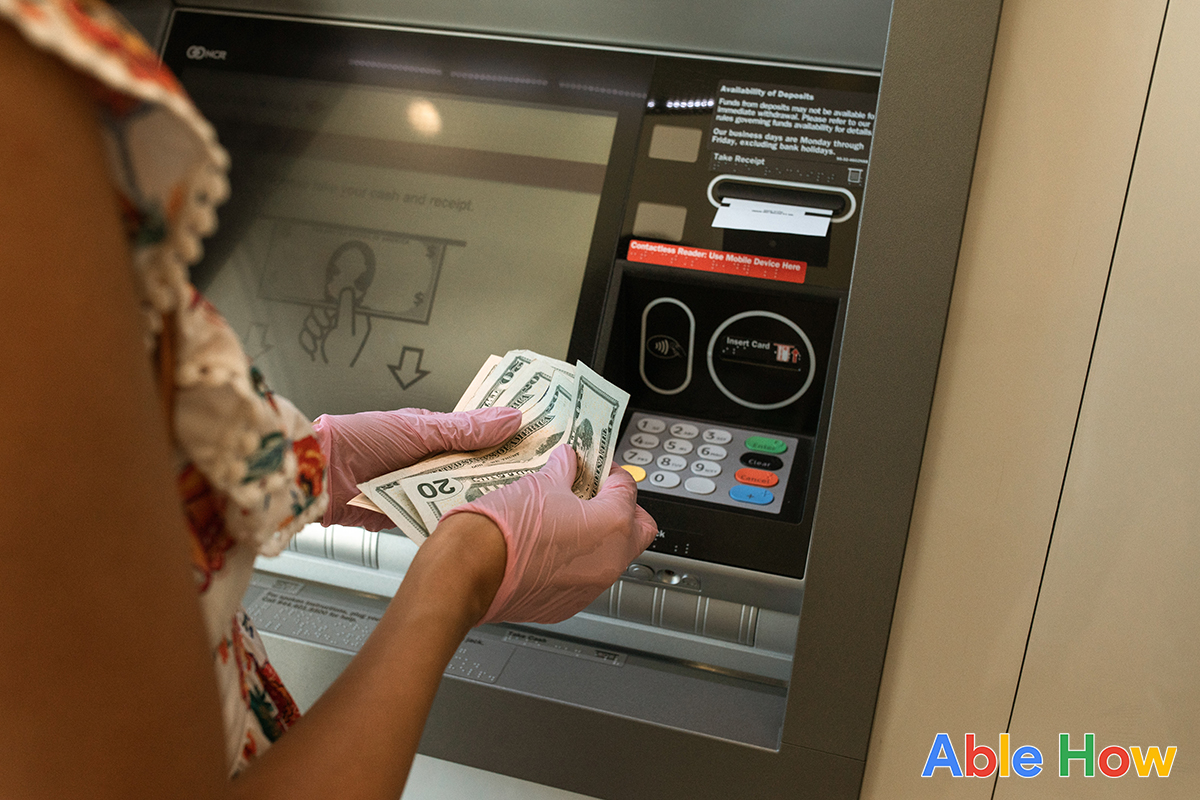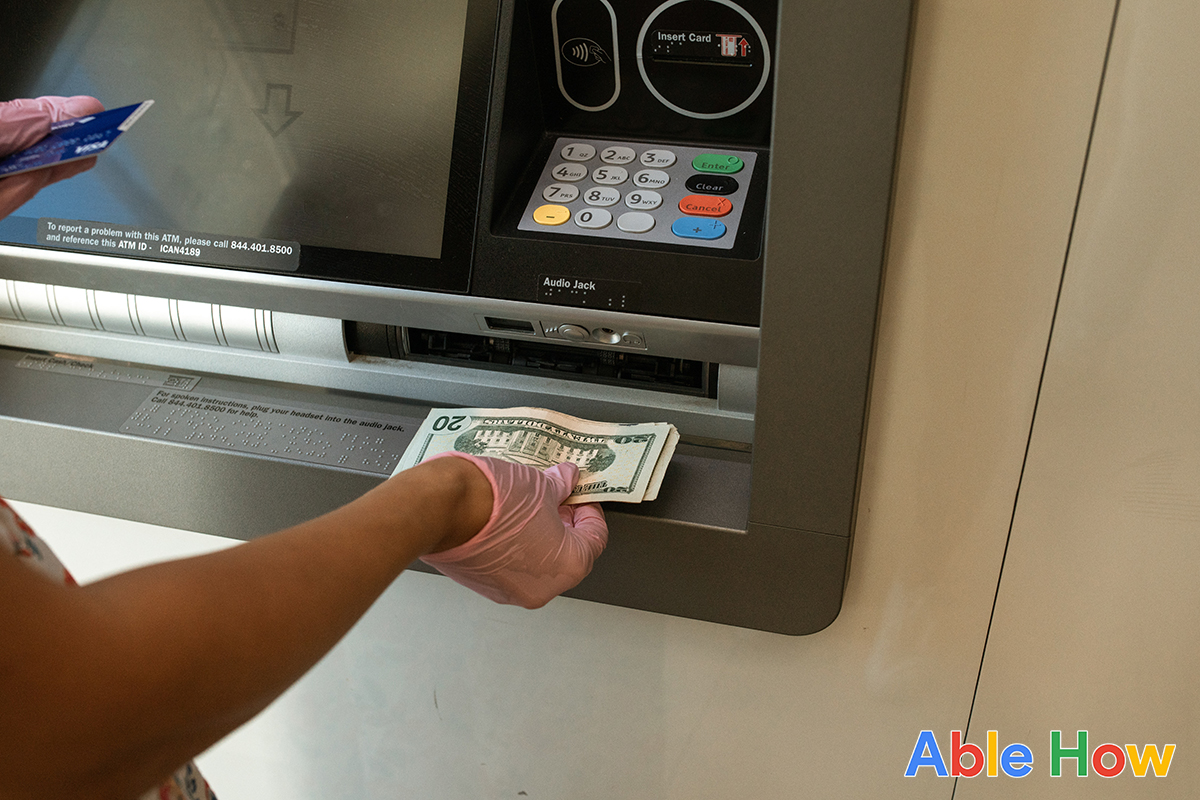How to Start an
ATM Business
How to Start an
ATM Business
ATM business, a lucrative and exciting opportunity for entrepreneurs looking to generate passive income. With a growing demand for cash, ATMs have become essential in our daily lives. But what exactly is an ATM business? How does it work? In this article, we’ll dive into the nitty-gritty details of starting and running an ATM business while exploring the basics of this ever-expanding industry. So buckle up and get ready to learn everything you need to know about making money with ATMs!
Why start ATM business?
- Increase your profit.
- Surcharge revenue
- Increase average spent
- Increase traffic
- Increase customer loyalty
You will learn from this article:
How to Start an ATM Business
How to Start an
ATM Business(*)
ATM Business(*)
1.What is an ATM Business?
An ATM business is a business that operates automated teller machines, or ATMs. These machines provide cash withdrawals, deposits, and other services to customers. Generally, ATMs are located in public places such as retail stores, banks, and other locations, and are operated and maintained by ATM owners. As an ATM business owner, you will be responsible for finding locations, setting up the hardware and software, managing the cash flow, and ensuring compliance with regulations.
The ATM business is a lucrative one with steady income and potential for growth. There are many benefits to running an ATM business, such as low overhead costs, the ability to work from home, and the potential for high profits. However, it is important to do your research and understand the ATM market before starting an ATM business.
2.Benefits of Starting an ATM Business
Starting an ATM business can be a great way to generate income and build wealth. Here are some of the key benefits of starting an ATM business:
- Low Overhead: An ATM business has low overhead costs compared to other businesses. You don’t need to rent or buy a physical location, hire employees, or invest in extensive equipment.
- Low Risk: The ATM business is relatively low risk. With the right planning and research, you can minimize potential losses and maximize profits.
- Flexible Working Hours: You can work when you want. With an ATM business, you can work from home or choose to work during certain hours or days.
- High Profits: Depending on the location and the number of machines you own, you can generate high profits from an ATM business.
- Growth Potential: With the right planning and research, you can expand your ATM business and increase your profits.
3.Understanding the ATM Market
Before you can start an ATM business, it is important to understand the ATM market. There are several factors to consider, such as the location of ATMs, the types of customers you’ll serve, the type of services you’ll offer, and the regulations and compliance requirements.
- Location: The location of ATMs is a key factor in the success of your business. You need to find locations that are easily accessible and have high foot traffic. Consider factors such as location, population density, competition, and customer needs.
- Customers: You need to understand the type of customers you’ll be serving. Consider factors such as age, income level, needs, and preferences.
- Services: What type of services will you offer? Will you offer cash withdrawals, deposits, transfers, or other services? You also need to consider the fees you’ll charge for each transaction.
- Regulations: You need to understand the regulations and compliance requirements for operating an ATM business. This includes obtaining the necessary licenses and permits, as well as ensuring that your ATMs comply with all applicable laws and regulations.

4. Choosing the Right Location
Once you have a better understanding of the ATM market, you can start looking for the right location for your business. Consider factors such as population density, foot traffic, competition, safety, and other factors.
- Population Density: It is important to find a location with a high population density. The higher the population, the more potential customers you’ll have.
- Foot Traffic: Look for a location with high foot traffic. This will ensure that your ATM is visible and accessible to customers.
- Competition: Consider the level of competition in the area. If there are many other ATMs, you may need to offer better services and fees to stand out.
- Safety: Safety is an important factor when choosing a location. Make sure the area is well lit and secure, and that there are no potential safety hazards.
- Other Factors: Consider other factors such as accessibility, parking, noise levels, and other factors that may impact your business.
5. Setting Up the Right ATM Hardware and Software
Once you’ve chosen the right location, you need to set up the right ATM hardware and software. This includes selecting the right hardware, software, and peripherals, as well as establishing the necessary connections.
- Hardware: The type of hardware you need will depend on the type of services you’ll offer. You’ll need to select a machine that meets your needs, as well as one that is reliable and secure.
- Software: You need to select the right software to run your ATM. This includes selecting a software package that is compatible with the hardware and offers the necessary features.
- Connections: You’ll need to establish the necessary connections to ensure that your ATM can communicate with the bank and the network. This includes establishing an internet connection, a phone line, and a secure connection with the bank.
- Peripherals: You’ll also need to select the right peripherals, such as card readers, printers, cameras, and other devices.
6. Establishing an ATM Network
Once you have the right hardware and software in place, you need to establish an ATM network. This includes connecting your ATM to the bank, as well as other ATMs in the network.
- Bank Connection: You need to establish a secure connection with the bank in order to process transactions. This includes setting up the necessary software, hardware, and protocols.
- ATM Network: You also need to connect your ATM with other ATMs in the network. This will allow customers to access their accounts from other locations.
- Security: Security is an important factor when establishing an ATM network. You need to ensure that all connections and transactions are secure and protected from fraud and other risks.

7. Building Brand Awareness
Once you’ve established an ATM network, you need to focus on building brand awareness. This includes creating a professional website, establishing a presence on social media, and engaging with customers.
- Website: Create a professional website to showcase your services and promote your business. Make sure to include all the necessary information, such as contact details, services, and fees.
- Social Media: Establish a presence on social media platforms such as Facebook, Twitter, and Instagram. Use these platforms to engage with customers and promote your business.
- Engagement: Engage with customers by responding to inquiries and complaints, offering discounts and promotions, and providing helpful information.
8. Understanding Compliance Requirements
It is important to understand the compliance requirements for operating an ATM business. This includes understanding and complying with local, state, and federal laws and regulations.
- Local Laws: Make sure to familiarize yourself with local laws and regulations, such as zoning laws and safety regulations.
- State Regulations: Make sure to understand state regulations, such as taxes, fees, and other requirements.
- Federal Regulations: Make sure to comply with federal regulations such as the Bank Secrecy Act and the Patriot Act.
- Industry Standards: Make sure to comply with industry standards, such as PCI-DSS and EMV.
9Developing an ATM Business Plan.
Before you can start your ATM business, you need to develop a business plan. This includes setting goals, researching the market, and creating a plan for success.
- Goals: Set realistic goals for your business. Consider factors such as the number of ATMs you want to own, the services you want to offer, and the profits you want to generate.
- Market Research: Research the market and understand the needs of your customers. This includes understanding the competition, the services they offer, and the fees they charge.
- Plan for Success: Create a plan for success. This includes setting a budget, creating a marketing plan, and establishing a timeline for launching your business.
10. Financing Your ATM Business
Once you’ve developed a business plan, you need to find the right financing for your business. This includes finding the right lenders, obtaining the necessary permits and licenses, and understanding the tax implications.
- Lenders: Find the right lenders for your business. Consider factors such as interest rates, terms and conditions, and repayment schedules.
- Permits and Licenses: Obtain the necessary permits and licenses to operate your business. This includes registering your business with the state, obtaining an ATM operator license, and other necessary permits.
- Taxes: Make sure to understand the tax implications of owning an ATM business. This includes understanding federal, state, and local taxes.
11. Tips for Finding Success
Starting an ATM business can be challenging, but with the right planning and resources, you can find success. Here are some tips for finding success in the ATM business:
- Take Your Time: Don’t rush into starting your business. Take your time to do the necessary research and planning.
- Focus on Quality: Focus on providing quality services and products. Make sure that your ATM is reliable and secure, and that your customer service is excellent.
- Network: Build relationships with banks, other ATM operators, and other businesses in the industry. This will help you stay informed and connected.
- Market Your Business: Promote your business and get the word out. Use social media, advertising, and other marketing strategies to build brand awareness.
- Keep Up with Trends: Keep up with industry trends and stay informed about changes in technology, regulations, and customer needs.
Conclusion
Starting an ATM business can be a great way to start your path to financial success. With the right planning, research, and resources, you can launch an ATM business that is profitable and rewarding. This guide provides an overview of the key steps to get your business up and running. From understanding the ATM market to finding the right location and setting up the right ATM hardware and software, you will find the information and advice you need to get your business off the ground and running. With this guide in hand, you will be well equipped to start your journey to financial success.
How to Start an ATM Business(*)
How to Start an
ATM Business(*)
ATM Business(*)
1.What is an ATM Business?
An ATM business is a business that operates automated teller machines, or ATMs. These machines provide cash withdrawals, deposits, and other services to customers. Generally, ATMs are located in public places such as retail stores, banks, and other locations, and are operated and maintained by ATM owners. As an ATM business owner, you will be responsible for finding locations, setting up the hardware and software, managing the cash flow, and ensuring compliance with regulations.
The ATM business is a lucrative one with steady income and potential for growth. There are many benefits to running an ATM business, such as low overhead costs, the ability to work from home, and the potential for high profits. However, it is important to do your research and understand the ATM market before starting an ATM business.
2.Benefits of Starting an ATM Business
Starting an ATM business can be a great way to generate income and build wealth. Here are some of the key benefits of starting an ATM business:
- Low Overhead: An ATM business has low overhead costs compared to other businesses. You don’t need to rent or buy a physical location, hire employees, or invest in extensive equipment.
- Low Risk: The ATM business is relatively low risk. With the right planning and research, you can minimize potential losses and maximize profits.
- Flexible Working Hours: You can work when you want. With an ATM business, you can work from home or choose to work during certain hours or days.
- High Profits: Depending on the location and the number of machines you own, you can generate high profits from an ATM business.
- Growth Potential: With the right planning and research, you can expand your ATM business and increase your profits.
3.Understanding the ATM Market
Before you can start an ATM business, it is important to understand the ATM market. There are several factors to consider, such as the location of ATMs, the types of customers you’ll serve, the type of services you’ll offer, and the regulations and compliance requirements.
- Location: The location of ATMs is a key factor in the success of your business. You need to find locations that are easily accessible and have high foot traffic. Consider factors such as location, population density, competition, and customer needs.
- Customers: You need to understand the type of customers you’ll be serving. Consider factors such as age, income level, needs, and preferences.
- Services: What type of services will you offer? Will you offer cash withdrawals, deposits, transfers, or other services? You also need to consider the fees you’ll charge for each transaction.
- Regulations: You need to understand the regulations and compliance requirements for operating an ATM business. This includes obtaining the necessary licenses and permits, as well as ensuring that your ATMs comply with all applicable laws and regulations.

4.
Choosing the Right Location
Once you have a better understanding of the ATM market, you can start looking for the right location for your business. Consider factors such as population density, foot traffic, competition, safety, and other factors.
- Population Density: It is important to find a location with a high population density. The higher the population, the more potential customers you’ll have.
- Foot Traffic: Look for a location with high foot traffic. This will ensure that your ATM is visible and accessible to customers.
- Competition: Consider the level of competition in the area. If there are many other ATMs, you may need to offer better services and fees to stand out.
- Safety: Safety is an important factor when choosing a location. Make sure the area is well lit and secure, and that there are no potential safety hazards.
- Other Factors: Consider other factors such as accessibility, parking, noise levels, and other factors that may impact your business.
5.Setting Up the Right ATM Hardware and Software
Once you’ve chosen the right location, you need to set up the right ATM hardware and software. This includes selecting the right hardware, software, and peripherals, as well as establishing the necessary connections.
- Hardware: The type of hardware you need will depend on the type of services you’ll offer. You’ll need to select a machine that meets your needs, as well as one that is reliable and secure.
- Software: You need to select the right software to run your ATM. This includes selecting a software package that is compatible with the hardware and offers the necessary features.
- Connections: You’ll need to establish the necessary connections to ensure that your ATM can communicate with the bank and the network. This includes establishing an internet connection, a phone line, and a secure connection with the bank.
- Peripherals: You’ll also need to select the right peripherals, such as card readers, printers, cameras, and other devices.
6.Establishing an ATM Network
Once you have the right hardware and software in place, you need to establish an ATM network. This includes connecting your ATM to the bank, as well as other ATMs in the network.
- Bank Connection: You need to establish a secure connection with the bank in order to process transactions. This includes setting up the necessary software, hardware, and protocols.
- ATM Network: You also need to connect your ATM with other ATMs in the network. This will allow customers to access their accounts from other locations.
- Security: Security is an important factor when establishing an ATM network. You need to ensure that all connections and transactions are secure and protected from fraud and other risks.

7.Building Brand Awareness
Once you’ve established an ATM network, you need to focus on building brand awareness. This includes creating a professional website, establishing a presence on social media, and engaging with customers.
- Website: Create a professional website to showcase your services and promote your business. Make sure to include all the necessary information, such as contact details, services, and fees.
- Social Media: Establish a presence on social media platforms such as Facebook, Twitter, and Instagram. Use these platforms to engage with customers and promote your business.
- Engagement: Engage with customers by responding to inquiries and complaints, offering discounts and promotions, and providing helpful information.
8.Understanding Compliance Requirements
It is important to understand the compliance requirements for operating an ATM business. This includes understanding and complying with local, state, and federal laws and regulations.
- Local Laws: Make sure to familiarize yourself with local laws and regulations, such as zoning laws and safety regulations.
- State Regulations: Make sure to understand state regulations, such as taxes, fees, and other requirements.
- Federal Regulations: Make sure to comply with federal regulations such as the Bank Secrecy Act and the Patriot Act.
- Industry Standards: Make sure to comply with industry standards, such as PCI-DSS and EMV.
9Developing an ATM Business Plan.
Before you can start your ATM business, you need to develop a business plan. This includes setting goals, researching the market, and creating a plan for success.
- Goals: Set realistic goals for your business. Consider factors such as the number of ATMs you want to own, the services you want to offer, and the profits you want to generate.
- Market Research: Research the market and understand the needs of your customers. This includes understanding the competition, the services they offer, and the fees they charge.
- Plan for Success: Create a plan for success. This includes setting a budget, creating a marketing plan, and establishing a timeline for launching your business.
10.Financing Your ATM Business
Once you’ve developed a business plan, you need to find the right financing for your business. This includes finding the right lenders, obtaining the necessary permits and licenses, and understanding the tax implications.
- Lenders: Find the right lenders for your business. Consider factors such as interest rates, terms and conditions, and repayment schedules.
- Permits and Licenses: Obtain the necessary permits and licenses to operate your business. This includes registering your business with the state, obtaining an ATM operator license, and other necessary permits.
- Taxes: Make sure to understand the tax implications of owning an ATM business. This includes understanding federal, state, and local taxes.
11.Tips for Finding Success
Starting an ATM business can be challenging, but with the right planning and resources, you can find success. Here are some tips for finding success in the ATM business:
- Take Your Time: Don’t rush into starting your business. Take your time to do the necessary research and planning.
- Focus on Quality: Focus on providing quality services and products. Make sure that your ATM is reliable and secure, and that your customer service is excellent.
- Network: Build relationships with banks, other ATM operators, and other businesses in the industry. This will help you stay informed and connected.
- Market Your Business: Promote your business and get the word out. Use social media, advertising, and other marketing strategies to build brand awareness.
- Keep Up with Trends: Keep up with industry trends and stay informed about changes in technology, regulations, and customer needs.
12.Conclusion
Starting an ATM business can be a great way to start your path to financial success. With the right planning, research, and resources, you can launch an ATM business that is profitable and rewarding. This guide provides an overview of the key steps to get your business up and running. From understanding the ATM market to finding the right location and setting up the right ATM hardware and software, you will find the information and advice you need to get your business off the ground and running. With this guide in hand, you will be well equipped to start your journey to financial success.
Tips of start an ATM business
- How to start Freelancing? Click Here to Know!
Video






Leave A Comment